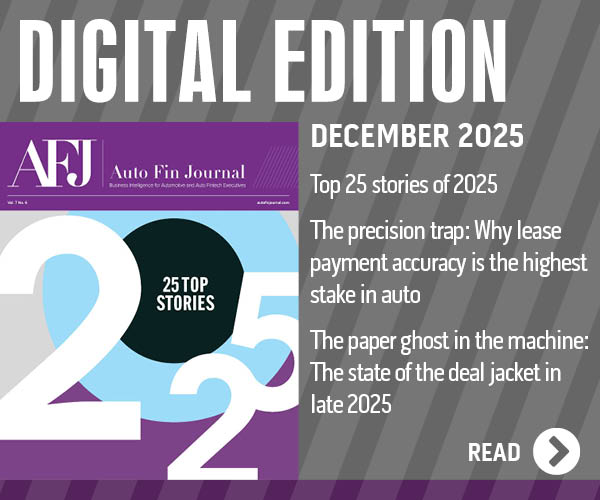Studies: More operational changes ahead in 2019 with machine learning, big data and blockchain

By subscribing, you agree to receive communications from Auto Remarketing and our partners in accordance with our Privacy Policy. We may share your information with select partners and sponsors who may contact you about their products and services. You may unsubscribe at any time.
CHERRY HILL, N.J., & SANTA CLARA, Calif. –
A recent survey conducted by TD Bank showed treasury and finance professionals anticipate more operational challenges in 2019 than in previous years.
And a separate analysis distributed by Frost & Sullivan highlighted that technologies such as machine learning, big data and blockchain will become prominent, especially as cybercrime becomes more sophisticated and even a method of warfare.
According to an endeavor orchestrated by TD Bank during the 2018 Association for Financial Professionals annual conference in Chicago late last year, the risk of payments fraud and cybersecurity topped professionals’ list of concerns with 44 percent naming it their top operational challenge. That response level presented a 14 percent year-over-year increase.
TD Bank found the ability to adapt to or process faster or electronic payments is an obstacle for 37 percent of survey respondents, also rising 14 percent year-over-year. The bank acknowledged this concern is likely to cause some anxiety for finance professionals, as commercial payments continue evolving.
In fact, the majority (60 percent) of respondents expect to see the largest amount of growth this year within faster or real-time processing, an 8 percent increase from last year.
Despite industry uncertainties, blockchain has benefits
Unsurprisingly, the TD Bank findings showed that technology continues to influence treasury operations, and the majority of survey respondents (90 percent) feel that blockchain/distributed ledger technology will have some type of positive effect on the payments industry.
Subscribe to Auto Remarketing to stay informed and stay ahead.
By subscribing, you agree to receive communications from Auto Remarketing and our partners in accordance with our Privacy Policy. We may share your information with select partners and sponsors who may contact you about their products and services. You may unsubscribe at any time.
The top impact of blockchain/distributed ledger technology is its ability to create stronger audit trails (29 percent), respondents said. Additional positive outcomes include:
— Speeding up the payments process (22 percent)
— Improving efficiency of cross-border payments (21 percent)
— Reducing payments fraud (18 percent)
“Blockchain technology has broad implications for the commercial payments space, from speeding up settlements to securing cross-border transactions,” said Rick Burke, head of corporate products and services at TD Bank.
“Even though much of the industry has a baseline understanding that blockchain can evolve and improve payments, the varied responses indicate that the technology’s specific capabilities and implications are still a great unknown for many finance professionals,” Burke continued.
Despite the hype around new innovations like blockchain, TD Bank found that finance professionals appear to be split on the use of another technology type to facilitate payments: open APIs.
Survey results showed 50 percent of respondents claim that their organization currently uses or is in the process of integrating open APIs into company operations, while 49 percent do not use open APIs, and nearly a quarter of that group does not have plans to do so in the future.
With so much change on the horizon, TD Bank’s survey uncovered that companies are investing in training strategies for several facets of treasury operations. Survey respondents said their organization has training strategies specifically for data and analytics (45 percent), AI and automation (26 percent) and blockchain (14 percent).
Fraud casts a larger cloud
As the risk of payments fraud and cybersecurity threats is top of mind across the industry, TD Bank learned that there comes an expectation from 98 percent of respondents that financial institutions should assist organizations with protecting against fraud and cybercrime.
More than half (55 percent) said financial institutions can help them better protect against fraud and cybercrime through education — although 48 percent of respondents admitted that their company does not have any in-house cyber fraud prevention training.
Additionally, TD Bank said one in four finance professionals surveyed feel that banks should offer greater controls on transactions, and 18 percent state they want risk or process reviews.
“As global fraud and cybersecurity incidents continue to rise, corporations recognize the need to bolster their protective measures and improve employee understanding of how to safeguard finances,” Burke said.
“To achieve real success, organizations and their employees need to be better able to identify and deter fraud attempts. This should be a responsibility shared by businesses and their financial institutions, beginning with better education,” he went on to say.
TD Bank polled finance professionals at the 2018 AFP Conference held last November in Chicago. A total of 406 responses were collected from industry professionals, including business end-users and financial and technology services organizations.
More discussion about machine learning and blockchain
Experts at Frost & Sullivan highlighted that machine learning aids early detection of anomalies, while blockchain creates a trustworthy network between endpoints,
The firm also pointed out the rise of the Internet of Things (IoT) has opened up numerous points of vulnerabilities, compelling cybersecurity companies, especially startups, to develop innovative solutions to protect enterprises from emerging threats.
“Deploying big data solutions is essential for companies to expand the scope of cybersecurity solutions beyond detection and mitigation of threats,” Hiten Shah, a research analyst at TechVision, said in the Frost & Sullivan report available here.
“This technology can proactively predict breaches before they happen, as well as uncover patterns from past incidents to support policy decisions,” Shah continued.
Frost & Sullivan’s recent analysis titled, “Envisioning the Next-Generation Cybersecurity Practices,” presents an overview of cybersecurity in enterprises and analyzes the drivers and challenges to the adoption of best practices in cybersecurity. It also covers the technologies impacting the future of cybersecurity and the main purchase factors.
“Startups need to make their products integrable with existing products and solutions as well as bundle their solutions with market-leading solutions from well-established companies,” Shah said. “Such collaborations will lead to mergers and acquisitions, ultimately enabling companies to provide more advanced solutions.”
Frost & Sullivan explained that technologies that are likely to find the most application opportunities include:
— Big data: It can enable automated risk management and predictive analytics. Experts think its adoption will be mostly driven by the need to identify usage and behavioral patterns to help security operations spot anomalies.
— Machine learning: It can allow security teams to prioritize corrective actions and automate real-time analysis of multiple variables. Using the vast pools of data collected by companies, machine learning algorithms can zero in on the root cause of the attack and fix detected anomalies in the network.
— Blockchain: The data stored on blockchain cannot be manipulated or erased by design. Experts explained the tractability of activities performed on blockchain is integral to establishing a trustworthy network between endpoints. Furthermore, the decentralized nature of blockchain greatly increases the cost of breaching blockchain-based networks, which can discourage hackers.


